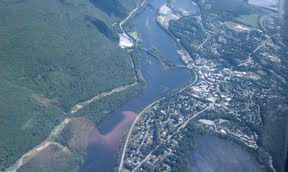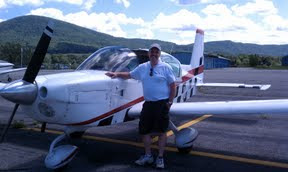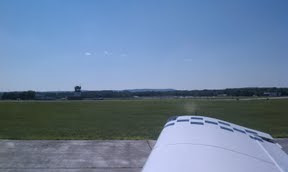I've written about this before. Remember oh-so-long-ago when our PDA was a separate device from our phone? (Hooray for Handspring!) I wanted a single device.
 Well I think I found an area where convergence does not pay off. Behold my Garmin GPSCOM 190.
Well I think I found an area where convergence does not pay off. Behold my Garmin GPSCOM 190. For decades iCom and Sporty's sold handheld VHF aviation communication radios that also included rudimentary navigation assistance with a VOR receiver and an OBS display. They seem to be standard equipment in any experienced IFR pilot's flight bag. And these things pretty much last forever. The aviation industry is nowhere near ready to move off either VHF communication, or VOR navigation (I suspect those may be fighting words to GPS direct adherents). These two systems have been in place for decades, and have decades more to go. Buying a handheld nav-com is just what IFR pilots do.
Not me. I see the advent of GPS, and instead buy a GPSCOM. Same idea, right? Half com / half nav -- same device only for the 21st century. This was a good device, and for the $1,000 I paid for it, it should be a great device. It provides a way to store routes, create user waypoints; it has airport information and data on frequencies which can be set on the communication radio. It had no way to display terrain; the low resolution screen is chunky. As time has gone on, the physical limitations of the hardware and been crushed by the new features available on newer devices (imagine trying to load your current PC environment into the same hardware you ran Windows98 on ten years ago).
 Much like the GPS in your car, with new roads being built, off-ramps getting relocated, and new housing developments being spread on to the landscape like cake frosting, things in the sky are not static. New VOR’s are added, airports are closed, waypoints come and go, frequencies change, and even runway numbers are updated. Each of those changes would have required a database update in my GPS, and a couple years back Garmin stopped providing those updates and stopped supporting the GPSCOM 190.
Much like the GPS in your car, with new roads being built, off-ramps getting relocated, and new housing developments being spread on to the landscape like cake frosting, things in the sky are not static. New VOR’s are added, airports are closed, waypoints come and go, frequencies change, and even runway numbers are updated. Each of those changes would have required a database update in my GPS, and a couple years back Garmin stopped providing those updates and stopped supporting the GPSCOM 190. The rechargeable Ni-Cad battery pack no longer holds a charge and now leaks battery guts. So I am left with a device that would still work for situational awareness, and would work as a backup communication device (which I had to use once!) but is no longer serviceable. No batteries, no data updates. Just an expensive piece of electronics.
So what did I learn about convergence?
- Make sure the technologies being converged have similar development trajectories. Watch and a Stopwatch? Check. Knife, screwdriver, pliers? Check. Cell phone, pda? Eh, close enough.
- Long life, stable electronics (think flashlight) should have standard batteries, not custom single application packs.













